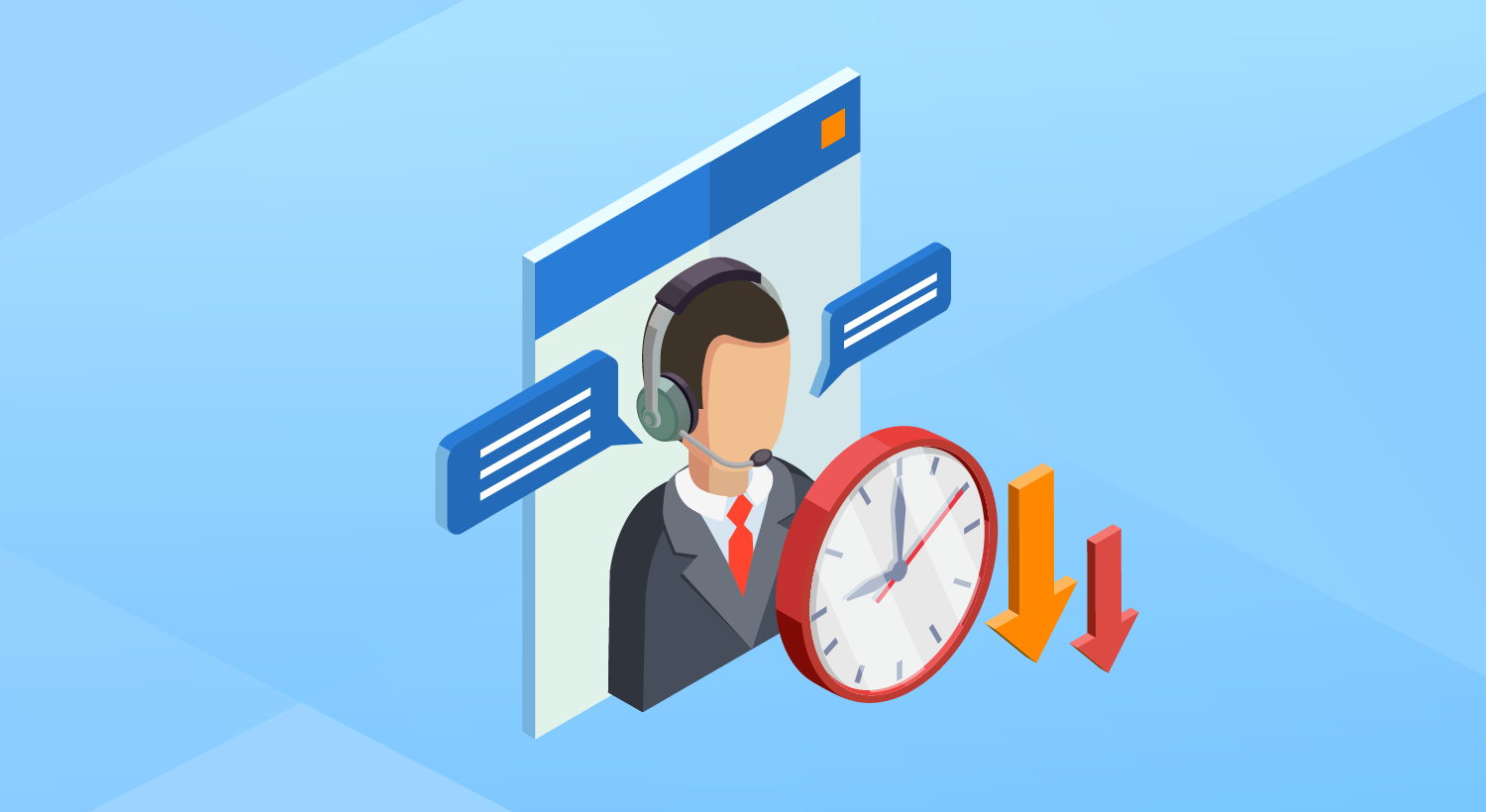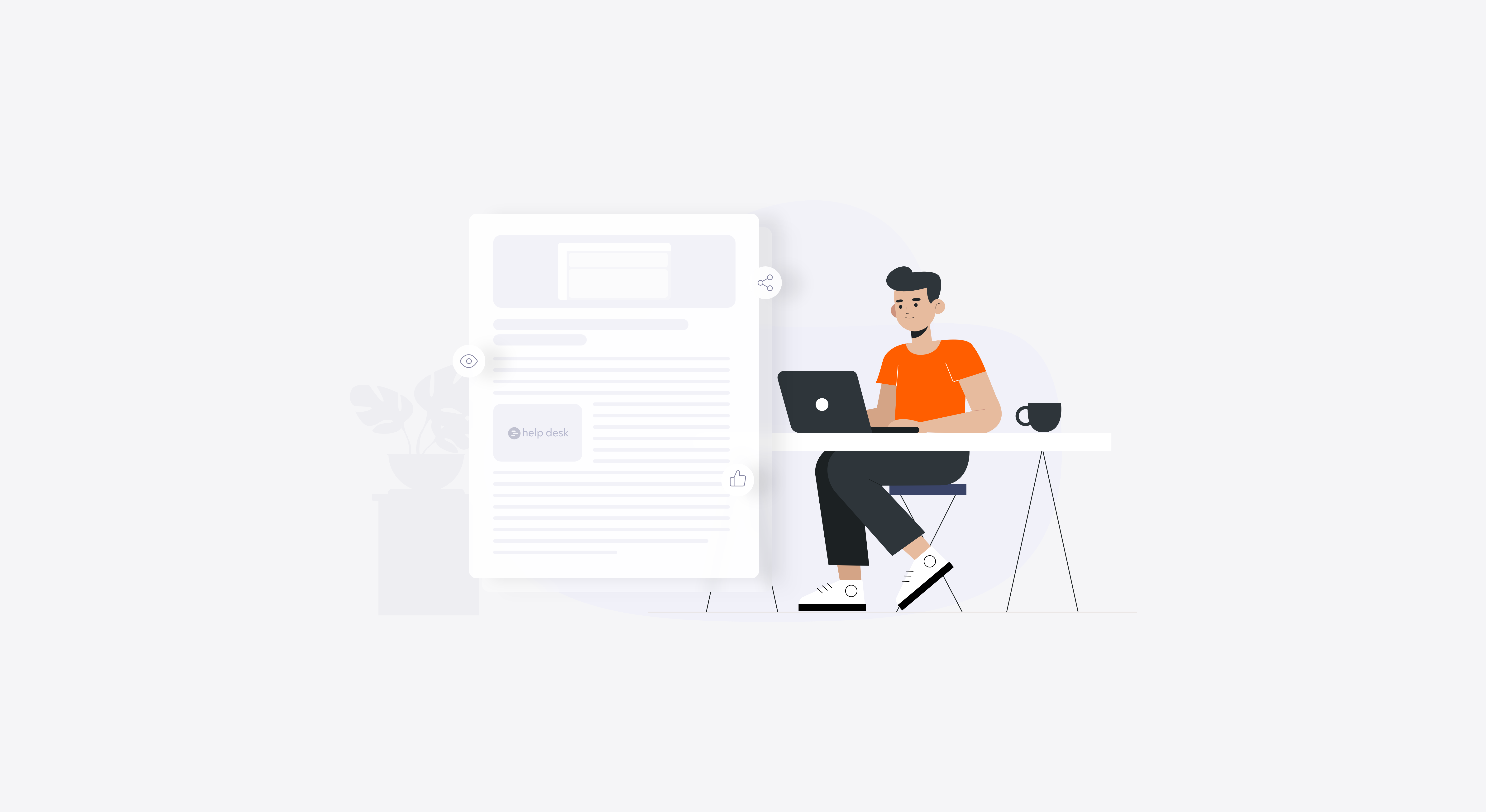Each day, customers are exposed to thousands of brands vying for their attention, with exceptional customer service as the only competitive differentiator. It is a necessity to deliver customers the experience they want — and fast. Take a look at eight proven ways to improve your customer service response time.
What is Customer Service Response Time?
Customer service response time is the amount of time elapsed between receiving an inquiry and sending a response. Automated responses don’t count. Average response times vary depending on the industry and the channel your customer chooses to contact you.
For instance, a good response time for live chat is 45 seconds whereas, for email, it is 2-4 hours. But how do you measure customer service response time?

How to Improve Your Customer Service Response Time?
- Set up Automatic Response to Inform Customers They Will Hear Back Soon
- Expand Canned Responses to Fit a Vast Range of Common Tickets
- Categorize Tickets Based on Priority
- Leverage Omnichannel Strategy to Distribute Support Volume
- Automate Recurring Support Actions to Save Time
- Reduce Incoming Ticket Volume With Self-service Knowledge Base
- Utilize Chatbots to Provide 24×7 Support
- Set Realistic Goals and Track Response Time Effectively
1. Set up Automatic Response to Inform Customers They Will Hear Back Soon
Automated email response is the confirmation email you receive after sending an email query. Automatic responses are generic email templates that don’t bring any specific value to the query received. Nor are they counted as first responses. An automatic response is a valuable email management feature that assures your customer that you have received the query and are currently working on it.
Also, by linking your automated email responses to a knowledge base and FAQ pages, you can introduce customers to your self-service tools. This may even help them solve the issue themselves and stick around only if the issue needs expert attention. You can also add your typical response time in your automatic responses to paint a realistic picture of when can customers expect their issues addressed.
2. Expand Canned Responses to Fit a Vast Range of Common Tickets
Canned Responses are pre-formatted responses to common questions. Utilize your event logs and support data to customize canned responses for a vast range of common tickets. Default templates you find on your email are often unusable because they are not tailored to your business. By investing time in drafting the perfect canned response templates, you can add value to customers and also improve your resolution time by reducing the steps taken to resolve an issue.
For instance, say you get a lot of logistics tickets where the mandatory first step is collecting the customer’s order number. You can set up a canned response to collect this detail, making the ticket ready to solve when a customer service representative steps in.
Download free canned response templates
Use our ready-to-use canned response templates to respond to customers fast and eliminate the monotony of customer support emails.
3. Categorize Tickets Based on Priority
Attending tickets as they come is not an ideal way to solve issues. Every ticket is important. But not every ticket is urgent. Treating every ticket as urgent and top priority has no advantage. Categorize your tickets based on the minimum time to resolve, the complexity of the issue, time sensitivity, and the level of impact.
Prioritizing tickets will give your support team members the choice to handle tickets based on the similarity of subject matter or difficulty level. This makes resolving tickets easy and improves productivity, probably because they just encountered a similar issue. After categorizing, you can auto-assign tickets in different ways such as a round-robin algorithm or a load-balanced distribution based on agent availability.
4. Leverage Omnichannel Strategy to Distribute Support Volume
One of the best ways to manage a flooding inbox is by providing omnichannel support. An omnichannel help desk software will help you provide multiple channels for customers to interact, thereby decentralizing tickets and preventing individual channels from getting bombarded with tickets. Every ticket is unique; one takes a customer service expert to solve while another could use a simple knowledge base article. Identifying which issue is which and routing them to the right channel will save the time and effort spent on every issue. The massive advantage of omnichannel support is giving customers the opportunity to choose the channel they find convenient. Would rather not phone an agent? They can use the chatbot. Quick assistance? They can stick with live chat.
In 2020, 75% of customers said that the most important attribute of customer service is a fast response time.
SuperOffice
The key is to make customers aware of these offerings. Subpar search functions and missed plugin options will prevent customers from benefitting from your omnichannel efforts. Maximize your omnichannel support benefits by interlinking the channels of customer service interactions and making navigation between the channels easy. For example, you can link to your social media channels on your email signature. You can link to your knowledge base articles on your email responses.
5. Automate Recurring Support Actions to Save Time
You can’t reduce the customer reply time without automation. Automating customer support processes, the recurring ones, will have a huge impact on your response timeframe. Resolving a ticket has a lot of manual touchpoints, like modifying ticket status, assigning priority, notifying customers, initiating follow-ups, and many more. You can automate these actions and save time incrementally for every ticket that comes in. Automating your help desk tickets will also help you reduce overall costs incurred per ticket by eliminating the need for manual actions.
6. Reduce Incoming Ticket Volume With Self-service Knowledge Base
A recent survey showed that more than 90% of customers prefer a knowledge base to phone calls if it’s resourceful. This shows that customers don’t always need or want to talk to the customer service team every time they have a service request. They are happy with being guided towards the right answers. When you link a knowledge base to your help desk, your customers will automatically find relevant KB articles populated in the drop-down list as they type their issue. This reduces your incoming ticket volume and leads to better time management, as slow response times mostly result from tickets piling up.
The lesser the time and wait, the happier your customers are. Offer a solid self-service tool like HappyFox Knowledge Base that is social-media ready, multilingual, search-friendly, and mobile-responsive.
7. Utilize Chatbots to Provide 24×7 Support
In order to provide an immediate response, you should be on the constant lookout for any inquiries. That is neither possible nor realistic for a time-bound support team. Luckily, there are alternatives. You can use a chatbot as the first line of support for any ticket you receive during late nights, weekends, as well as public holidays.

Support agents must hate Mondays and the opening day after holidays because that’s when tickets get queued up the most. Most of these tickets might not even need human expertise. Using a chatbot to provide real-time, round-the-clock support even outside of business hours is the best way to provide quick resolutions to these tickets and meet customer expectations.
Deflect 70% of your tickets
HappyFox Chatbots is estimated to deflect up to 70% of repetitive tickets without agent intervention, using quick replies, inline content, and knowledge base and help desk integration. Learn more.
8. Set Realistic Goals & Track Response Time Effectively
Customer experience surveys time and again reveal the direct correlation between quick response times and great customer service. According to a SuperOffice and Toister survey, an average company takes 12 hours and 10 minutes to respond to a new email. The same survey revealed that 31.2% of customers expect a response in an hour or less. The difference is steep. You will stand apart from your competitors simply by responding faster than that.
But it is easy to lose track of your response times if you don’t outline and measure KPIs that matter, such as average first response time, average handling time, and ticket resolution time. The assessments you do before you outline these KPI metrics will give you insights into the adequacy of your staffing, the industry benchmark, and where you can improve. Set goals you can achieve and reveal the same to your customers so they know what to expect. With reporting software like HappyFox Business Intelligence, you can transform data from different customer service channels into actionable customer insights. With constant tracking, you can understand the capabilities of your customer service department and incorporate the learnings in your future goals.
Impact of Faster Customer Service Response Time
The impact of faster response times on customer service experience cannot be overstated. In the end, you will see greater customer satisfaction, lesser escalations, reduced churn, and better conversion rates. But remember that customers won’t trade quality responses for faster responses. A fast yet weak response that only leads to a lot of back and forth is of no use. Find the sweet spot, and improve your customer service response time gradually. Sign a HappyFox Help Desk demo to learn how you can improve your overall customer service competency.








